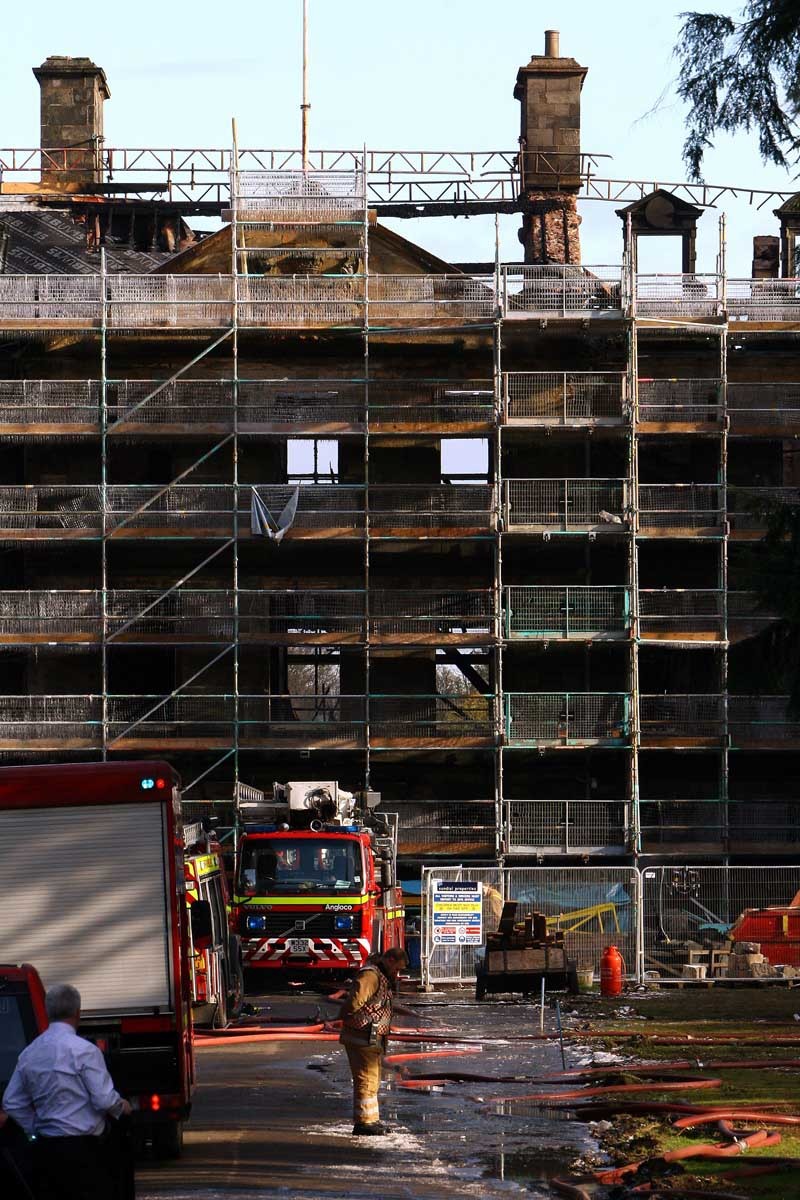A plan to bring one of Fife’s historic buildings back to its former glory is set to clear another important hurdle this month.
Edinburgh developer Sundial Properties remains determined to transform Leslie House into 17 luxury flats, despite the building and hundreds of thousands of pounds worth of investment going up in smoke.
The 18th century former Rothes family seat had been the subject of renovation work for a number of months when it was gutted by fire in February 2009, leaving the future of the project hanging in the balance.
However The Courier understands that Historic Scotland is to give renewed listed building consent for the flats proposal after Fife Council granted similar permission.
Managing director at Sundial William Gray Muir said the listed building consent, which should be rubber-stamped within the month, would be a step in the right direction for the entire project as the complete rebuild of Leslie House is now on the cards again.
“It’s going to be fantastic once the building can be reinstated in the middle of this exceptional landscape and once again lived in,” he said.
“From the exterior the building should be virtually indistinguishable from its original condition and the interior will closely follow the original plan.
“Before we start any work we’ve got an external programme of archaelogical investigations to take place and we hope that this work will greatly enhance people’s understanding of the building for future generations.”
Built in the 17th century, the original Leslie House was home to the Earls of Rothes but was destroyed by fire in 1763.
The existing Leslie House building was then created on the same site in the 18th century and, after being purchased by Sir Robert Spencer Nairn in 1919, was donated to the Church of Scotland in 1952 to be used as an eventide home.
After money problems forced the Kirk to close the home in 2003 the building fell into disrepair, until Sundial stepped in with plans to redevelop it, staying true to the mansion’s original character throughout the process.
But, while previous estimates suggested the first flats could be ready by next spring, it is understood the timescales involved are now likely to be pushed back much further than that not only due to the fire last year but because of the impact of the economic climate and issues involved with the rebuild.
Although no firm timescale can be put on when the building will be up and running, Mr Muir said the structure itself was still in a good condition considering the fire damage and last year’s harsh winter.
“In general the building is holding together remarkably well and there’s been very little deterioration in it since the fire,” he said.
“The most important thing for us is to get it wind and watertight again and that’s what we’re working towards.
Although the fire was a huge setback, work has been carried out in the grounds which has seen the entrance gates restored and relocated and new screen walls put up.
The main western lawns have also been levelled and re-seeded, with tree surgery helping to vastly improve the avenue.
